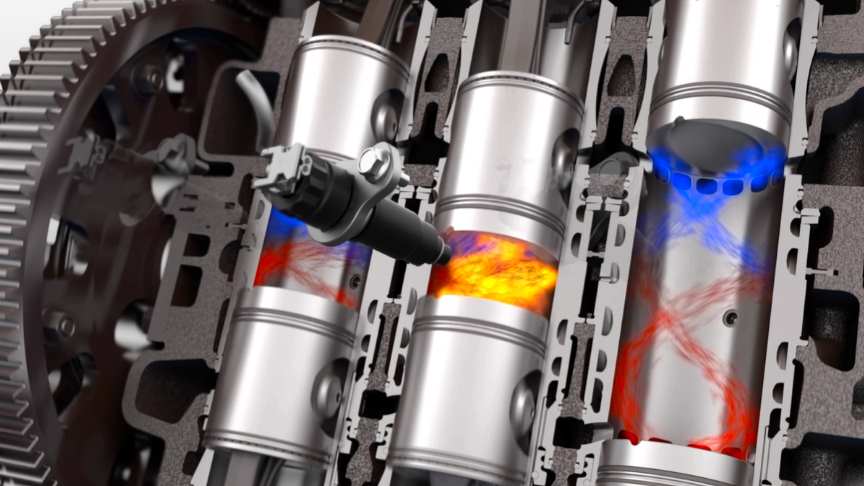The Achates Power opposed-piston engine is packed full of unique technology.The supercharged, turbocharged, diesel 3 cylinder makes use of six pistons, two of which operate in each cylinder. It’s a two-stroke design, meaning every time the pistons come together a power stroke occurs, forcing both pistons away from one another and rotating their respective crankshafts. The two crankshafts are geared together to a common output shaft, which powers the vehicle.
source/image(PrtSc): Engineering Explained
Research has shown two-stroke opposed piston engines to be wildly efficient. 3 cylinder designs are the most efficient, and it’s possible to achieve brake thermal efficiencies as high as 55%, a massive improvement for road car engines. The engine in this video is a 2.7L 3-cylinder producing 270 HP and 480 lb-ft of torque.
The design positions two pistons per cylinder—working in opposite, reciprocating motion. This eliminates parts including the cylinder head and valvetrain, improving overall engine efficiency as these components are considered primary contributors to heat and friction losses.
Advertisement
The cylinder head and valvetrain systems are also among the most complex and costly elements of conventional engines. The two-stroke cycle compounds the efficiency benefits of the opposed-piston engine architecture. With this cycle, each combustion event is shorter in duration and, therefore, closer to optimum timing as compared to four-stroke engines.











